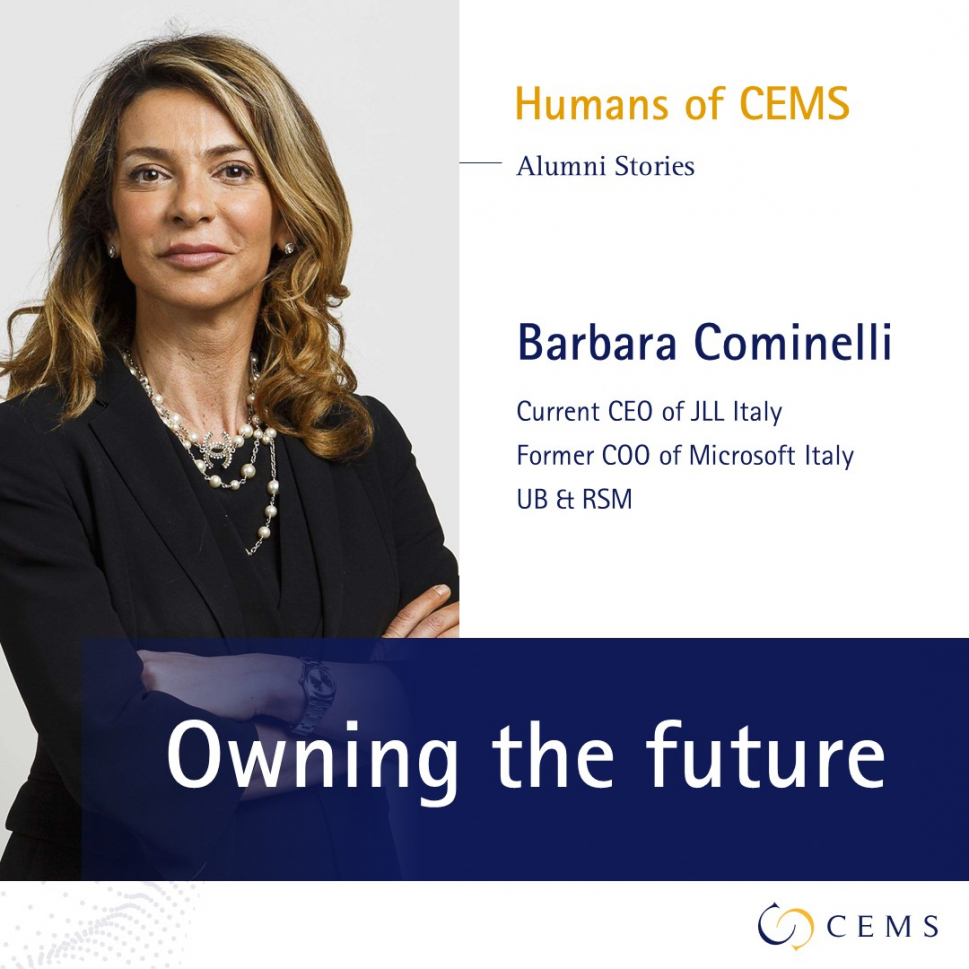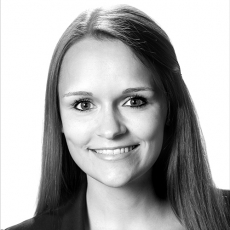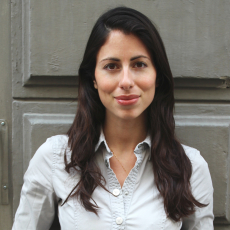More info
The CEMS Global Alliance is a purpose led organization, powered by our beliefs that great leadership starts with self-leadership and societal progress requires continual exploration. In this series of interviews, we take a look at CEMS students and alumni that are contributing to make this world a more open, sustainable and inclusive world.
Humans of CEMS: Owning the future
Today, in our Humans of CEMS series, we are happy to introduce you to Barbara Cominelli, one of our most successful alumni to date! After leading over 3,000 people at Vodafone, she became Chief Operating Office at Microsoft Italy and is today the CEO of the commercial real estate and investment firm JLL (Jones Lang LaSalle SpA) in Italy. In this interview, she gives valuable career advice, shares insight about how COVID will change the workplace and looks back at her time as a CEMSie.
1. You come from a background in consulting and tech but last year you were hired to lead JLL Italy, a real estate and investment firm. Do real estate firms need to change their mindsets to think more like tech companies?
In general, I do believe that every company needs to adopt a digital mindset and accelerate the journey to becoming a tech and data company, augmenting its own business with digital. This could range several different ways: from customer insights and experience, to operational effectiveness and efficiency, to employee productivity and engagement to the holy grail of being able to re-imagine and enrich the offering and the business model.
For Real Estate this is even more true: structural changes in demand – starting from the new hybrid way of working, shopping and living and the new paradigm of the polycentric, 15 minutes cities - , coupled with the digital and green revolution, are creating a unique opportunity not only to re-start the industry but to transform it.
It will be a profound transformation: business wise, maybe more importantly, a mindset and cultural transformation with real estate players becoming data driven, agile and enabling and activating the wider ecosystems.
At JLL, we want to be the lighthouse of this transformation: our purpose is to shape the future of Real estate for a better world, and we will do it by bringing to our clients the best technology and sustainable solutions. We’ve heavily invested in these two areas and keep doing so, both in terms of solutions and in terms of human capital.
2. How do you see the future of the office after the pandemic? Will cities need as much office space as before?
After the pandemic, we estimate that employees will continue to adopt the remote solution 2/2.5 days a week: working from home will diminish since employees will miss the office needing interaction to generate new ideas. In addition to this, for many people their home living arrangements make working from home a below optimal choice, with its limited space, lack of privacy and more distractions. This is particularly true for the younger generation, with global JLL survey data indicating that 64% of millennials are most eager to return to the office, the highest percentage of any age group. Therefore, the direction of the companies will not be able to get rid of spaces, but to create places that will have to adapt to the new needs, hybrid solutions and human centric spaces.
The office will maintain its central role and the organisations will have to evaluate and integrate distributed working models for the long term. The hybrid solution will consist in evolving from the “Work from home” to the “Work from anywhere”. Employees will have the opportunity to work for instance in coworking spaces, client sites, third places (cafés, hotel lounges), satellite locations and partner offices. The future workplace will be anywhere and at any time, with the traditional office acting as the central hive of productivity and center of innovation, providing employees with opportunities for social interaction and engagement, learning and team-building activities.
The office will become one of the available instruments to choose from, not a simple space where to go. In this perspective, the workplace will have to be more human-centric than ever: the focus will consist in enhancing the office in terms of collaboration, innovation, talent attraction & retention, health and wellbeing. As a smaller number of employees is forecasted to be on site, the model of the hubs&clubs could be adopted, consisting in the existence of a central representative office to which smaller and more flexible secondary offices will be added. The need for individual workstations will diminish and will be replaced by diversified workspaces to accommodate more types of businesses, such as sofas and bar-style counters for informal group work sessions and isolated niches for individuals.
Jamie Dimon, JP Morgan CEO, has declared that their workplace will stay workplace centric as there are negatives to working from home and they have seen productivity drop in certain jobs. Also for BlackRock, the office will remain the primary work location in the longer-term with a selectively use of remote work. For Marriott Intl, remote work works for some roles but for creativity and productivity, being together is irreplaceable. For Microsoft, flexibility is fundamental to support individual workstyles balancing business needs and corporate culture. Once it will be safe to return to the office, Google will test a flexible workweek; employees would be expected to work at least three days a week in the office to collaborate.
Corporate occupiers are accepting that they may never operate again in the way they did pre-crisis and that the ability to continuously adapt to new and changing conditions will be essential for future success. Companies should explore solutions that fit and flex with their organisation best. Lower workplace density and reconfigurations to handle greater logistical flexibility should help to keep the overall office utilisation and occupancy more stable than previously anticipated.
3. You were part of one of the first cohorts of CEMS. What was the program like and how does it differ from what CEMS is today?
It was the “young” version of the current program, with fewer member schools, but still with the same DNA: leading edge, international, multicultural, close to the corporate world. I’m very proud to see how the program has evolved today: 34 member schools across the globe, 69 corporate partners, 7 social partners. With an even stronger link with corporate partners and a stronger CEMS community across the globe.
4. You are very engaged around diversity and equal opportunity and serve as an inspiration for many young women. Who was your own role model when you started your career?
I was lucky, I had several not only at the beginning, but throughout my career. Actually I never stopped looking for inspiration from great people, it’s still a priority for me to learn from them, especially people from different backgrounds – especially entrepreneurial - and seniority.
As far as women are concerned we still need more role models for younger girls and senior women are beacons for younger women and need to represent a catalyst of change for the companies and societies they’re in. That’s why it’s essential that senior women DO play as role models. I know it takes time, as it is often on top of ordinary duties. Sometimes it feels frustrating, because you would prefer to talk about business instead of answering - for the umpteenth time - questions on how you balance it all and women may be afraid that talking about diversity could make them look weaker, not meritocratic or too feminist. But we - senior women leaders - are the key driver of this change and we do have the responsibility to send the elevator down to lift more women up.
This means also establishing mechanisms/processes that eliminate the obstacles to diversity. A culture based on talent, merit and results is the best friend of equality, and this is exactly the environment that leaders should create, removing all the obstacles to equal opportunities.
5. Can you tell us about one character trait or one specific decision of yours that was most important for your career?
I think there are two things that helped me a lot:
First a “learn it all” vs. a “know it all”, “growth vs. fixed” mindset. I worked in different roles and industries and what always helped me was a continuous learning approach, the humility to listen and collaborate.
Second, my motto, also for the younger generations is: Don’t wait to be perfect, lean in! Women tend to wait till they’re 110% ready and over-prepared to embrace a new role or a new professional challenge. Do not try to be perfect, be confident, believe in your strengths: when you’re 80% ready that’s exactly the time to take that big challenge outside your comfort zone.
6. What three tips would you give to current CEMS students?
- Think and act like you were the owner of your company. Always maintain an entrepreneurial growth mindset, the ambition to go beyond the status quo without being afraid of making mistakes – what you should be afraid of is stopping to learn and explore new opportunities.
- Leadership is not about being in charge but it’s about taking care, taking responsibility for others and developing others. Jack Welch stated that “before you are a leader, success is all about growing yourself. When you become a leader, success is all about growing others”. You should be pivotal in making individuals and the organization collectively progress. Leadership is a responsibility towards your people, your shareholders and the wider stakeholders: it’s not your success, but success through others and for others.
- Be a role model of company values and behaviours, walk the talk and be authentic.



